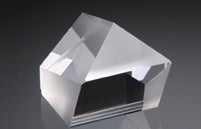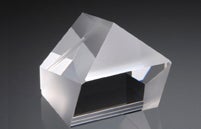We explain the various terms associated with viewfinders, such as pentamirror, pentaprism, magnification, eyepoint and coverage
Pentamirror
Typically found in entry-level and mid-range DSLRs, pentamirrors are cheaper to manufacture and much lighter than pentaprisms, using mirrors instead of a prism. Because of this they don’t show quite as bright a view.
 Pentaprism
Pentaprism
A glass prism coated on two sides to reflect light coming through the lens through to the eyepiece. These are more expensive to manufacture than pentamirrors, and so are typically found on professional cameras.
Magnification
This refers to the size of the image relative to how you would see it without a camera. Measurements are usually given for a 50mm focal length when set to focus at infinity, though sensor size also needs to be taken into account when comparing different models.
Eyepoint
This denotes how far you can be away from the eye-piece and still see the full image in the viewfinder. This is particularly useful for glasses wearers as they will naturally be slightly further away from the eyepiece.
Coverage
This indicates how much of the captured image is visible through the viewfinder upon composition. Measurements are usually given as one figure, such as 95%, though sometimes separate figures are given for the vertical and horizontal axes.





